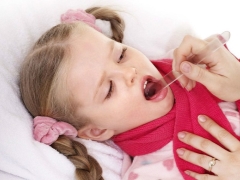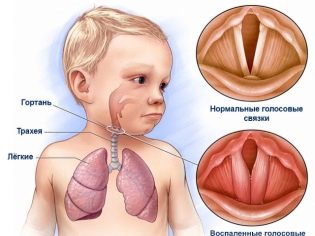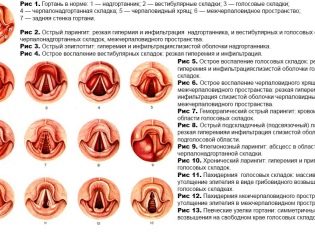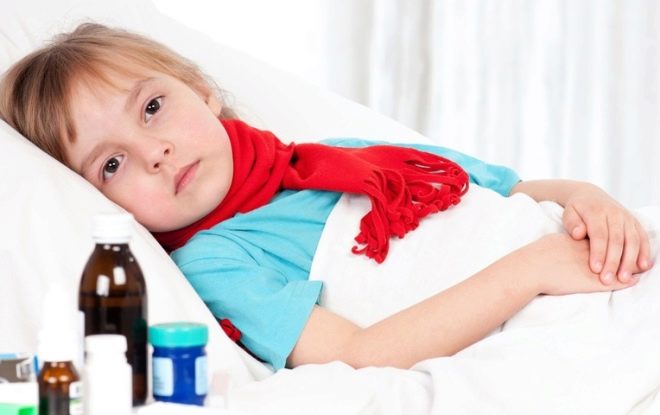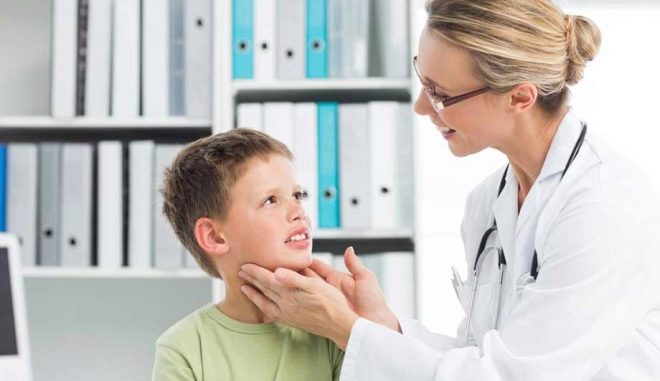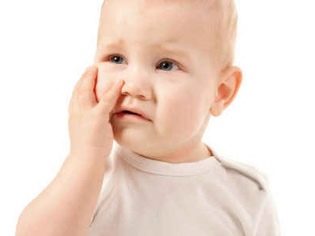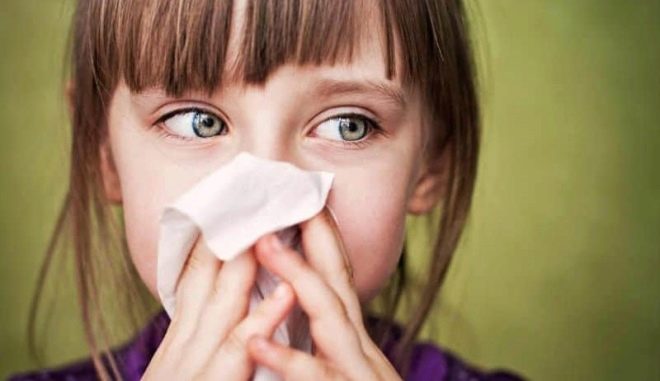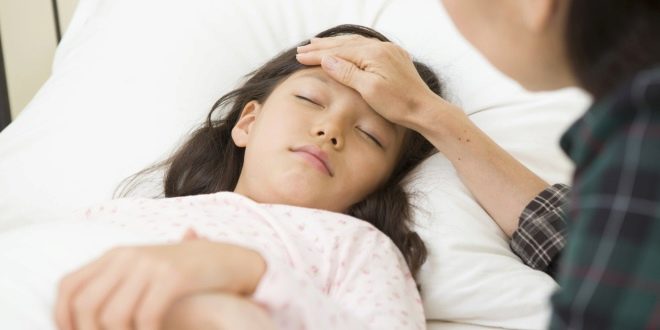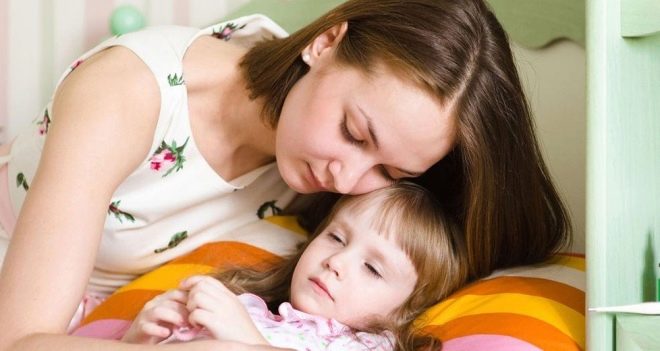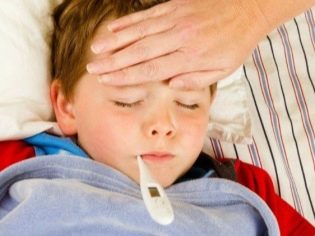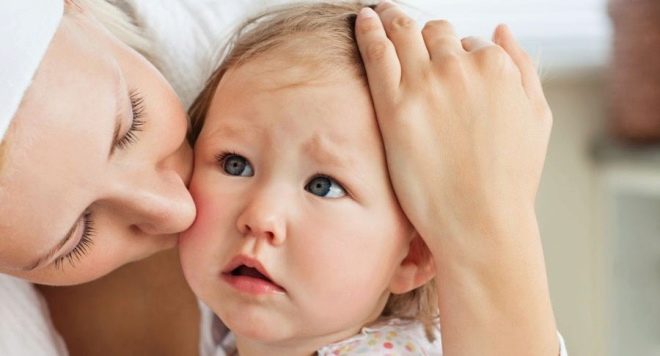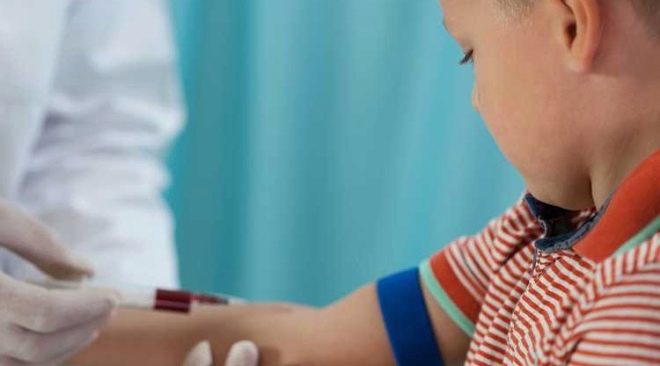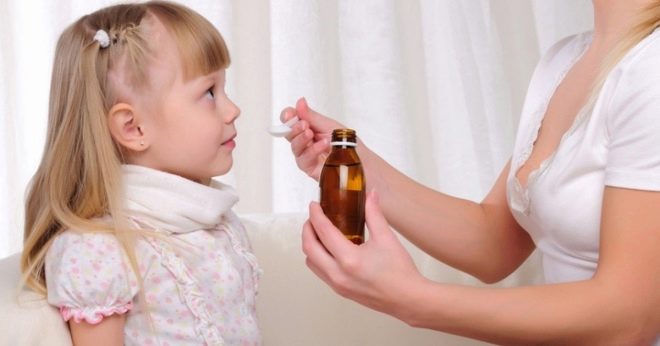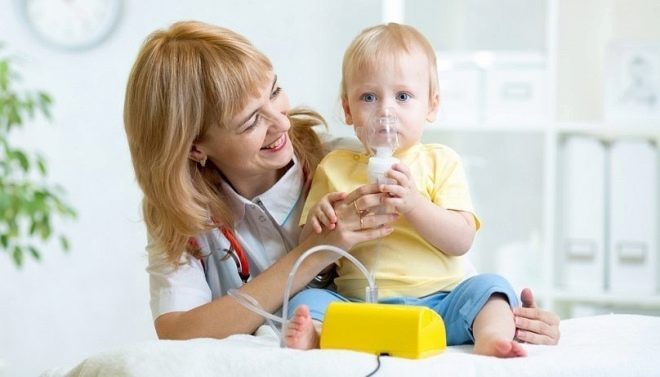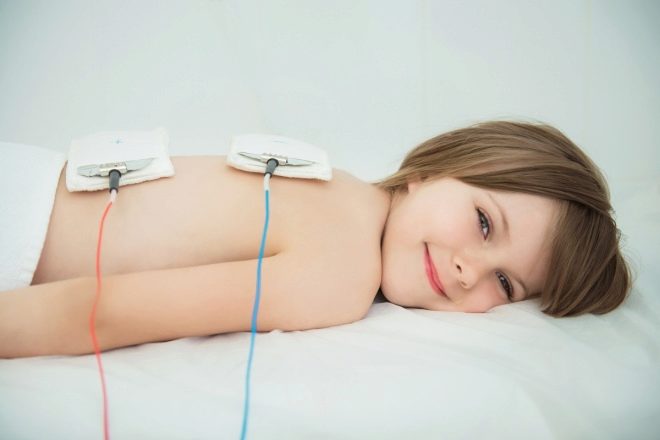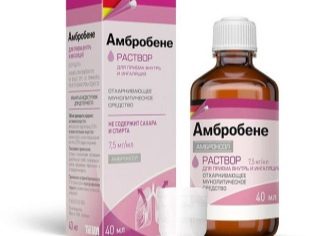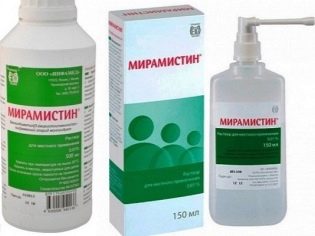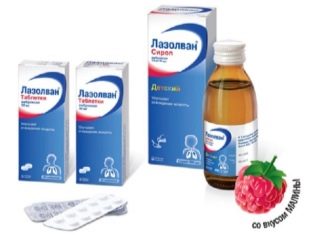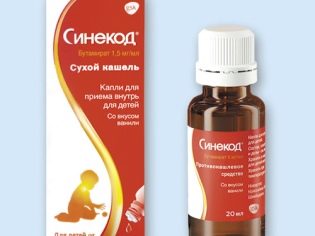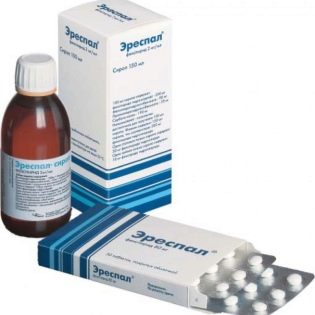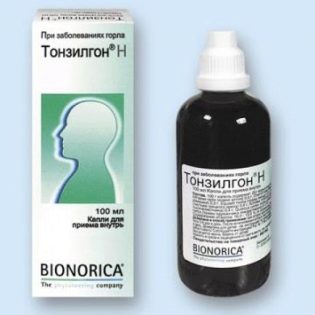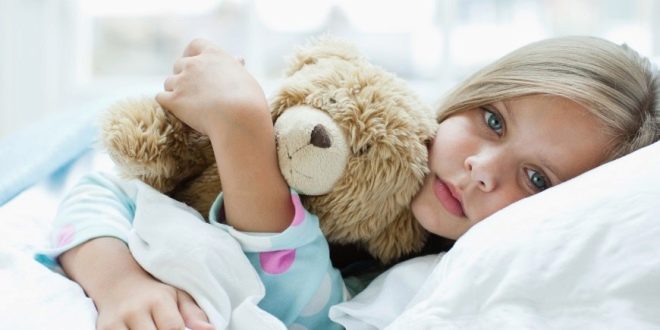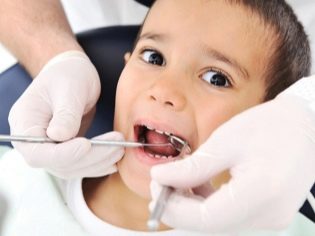Symptoms and treatment of laryngitis in children
Every parent is familiar with inflammatory diseases of the upper respiratory tract. Most often these pathologies affect children.
What it is?
A disease in which the mucous membranes of the larynx are inflamed is called laryngitis. The development of this pathology in children leads to the influence of various factors. Laryngitis is equally common in both boys and girls. There are many different clinical options for the disease. Such diversity influenced the creation of a classification in which the main nosological forms are included.
Doctors usually note some seasonality in laryngitis infection. Most cases occur in the cold season. Every year at this time moms, in whom babies get sick, turn to pediatricians. Children are susceptible to laryngitis more often than adults. This pattern is due to the peculiarities of their physiological development.
The pharyngeal tonsils (local immune formations) in childhood are still not effectively enough able to fight various microbes. This contributes to the rapid penetration of any pathogens into the respiratory tract.
Imperfect immunity or reduced work of the immune system contributes to the rapid spread of microbes inside the body, which provokes an increase in the inflammatory process.
The larynx is the organ responsible for conducting air from the external environment into the body. It connects the throat with the trachea. In a child, the lumen of the larynx is somewhat less than in adults. As it gets older, the size of all organs of the respiratory system increases. The larynx is also involved in voicing. When an inflammation occurs in a child, many adverse symptoms appear.
Common causes
Various causative factors can cause laryngitis. To date, scientists have identified more than 50 different causes of the disease. All factors can be divided according to similar characteristics into several large groups.
The development of inflammation of the larynx can lead to:
- Bacterial infections. In pediatric practice, streptococci and staphylococcus often become the culprits of the disease. Anaerobic flora causes the disease a little less. Bacterial laryngitis is usually quite bright and violent. In some cases, the need to provide medical care in a hospital.
- Viral diseases. The smallest sizes of viruses allow them to be easily absorbed on the mucous membranes of the upper respiratory tract. Once in the bloodstream, they easily reach the larynx. Already after a few hours from the moment of penetration into the children's organism, the inflammatory process starts. Viral laryngitis occurs somewhat easier than bacterial.
- Infection with fungal flora. Often, the growth of Candida fungus leads to the development of laryngitis. Fungal forms of the disease are more common in frequently ill and weakened babies. There are frequent cases of overgrowth of candida in children suffering from immunodeficiency or having diabetes. The treatment of fungal laryngitis is usually long-lasting with the mandatory prescription of antifungal and immunostimulating agents.
- Local hypothermia. Abuse of ice cream or chilled drinks, especially in the cold season, significantly contributes to damage to the mucous membranes. The cells that create the inner lining of the larynx are very sensitive to any temperature changes. Also provoke a disease can and excessively hot food.
- Inhalation of polluted air. The external environment has a tremendous impact on the state and functioning of the respiratory system. If toxic chemicals are contained in the inhaled air, this may damage the mucous membranes of the airways.
Toddlers living in large industrial cities or living near highways are usually more susceptible to this disease.
- Sick teeth. The oral cavity often becomes a source of infection for the respiratory system. In time, untreated teeth are the primary cause of inflammatory diseases of the larynx. The infection very easily penetrates this respiratory organ along with the blood flow. The presence of chronic laryngitis in a baby is often the result of the presence of carious teeth.
- Excessive voice load. Too loud singing or shouting can cause damage to the vocal cords and larynx. In this case, a pronounced mechanical effect occurs. Excessive loads on the vocal apparatus lead to the development of chronic forms of laryngitis.
- The consequences of operations. Quite often, after surgical treatment, signs of laryngitis appear on the thyroid gland. In this case, damage occurs to the organ due to mechanical stress. Usually laryngitis in this situation is chronic. To eliminate the adverse symptoms requires the regular use of various drugs.
- Excessive use of sprays or cough sprays. With long-term use, many drugs lead to the development of chronic pharyngitis or laryngitis. To eliminate the adverse symptoms that have arisen after such use, the complete abolition of the use of drugs is required.
- The consequences of severe stress or psycho-emotional turmoil. Kids have a very sensitive and sensitive nervous system. The larynx is a very well innervated organ. When exposed to strong stress, the child may experience various symptoms of laryngitis. Usually they are transient.
- Allergic states. Occur in children's practice quite often. The development of discomfort symptoms lead to the impact of various types of allergens. Allergic laryngitis can occur suddenly and even cause an acute obstructive variant.
All acute forms are treated in the hospital. In some cases, requires the appointment of hormonal drugs.
- Features of the constitution. Children suffering from lymphatic-hypoplastic diathesis, according to statistics, have a greater chance of getting laryngitis than their peers. This feature is associated with the physiological features of the baby with this disease. Usually these children look like: they have soft and streamlined facial features, rather pale skin, a subcutaneous cell is loose, and there is a tendency to swelling.
- Chronic diseases of internal organs. Thus, the symptoms of laryngitis often occur with a decrease in thyroid function - hypothyroidism. In infants with chronic gastritis with increased secretory function, gastric contents may reflux into the larynx. This leads to signs of laryngitis.
How is it transmitted?
Most laryngitis is infectious. Bacteria and viruses cause damage to the larynx in about 80% of cases. The source of the disease can be any person (adult and child) who has pathogens in their bodies.It is contagious to others throughout the illness.
Usually, all infectious diseases are transmitted by airborne droplets. Kids attending educational institutions are more likely to become infected. For infectious variants of laryngitis is also characterized by the contact-household mode of transmission. In this case, the infection occurs through dirty hands. This variant of infection is most common in children attending a kindergarten or nursery.
In the cold season, "family" outbreaks are common. In this case, all family members become ill with laryngitis.
Staying in any crowded groups only contributes to the spread of the virus. It is important to note that microorganisms can be in adverse environmental conditions long enough. Only the use of bactericidal agents can reduce their concentration.
If there are several babies in the family, then they start to hurt “along the chain”. This is due to the fact that viruses and bacteria are easily transmitted by breathing from a sick child to a healthy one. The severity of symptoms in each baby will be different. It depends on his age, features of physiological development, as well as the presence of chronic comorbidities.
The incubation period for laryngitis may be different. In viral infections, the first clinical signs of the disease usually appear several days after the viruses enter the body. The peak incidence of viral laryngitis occurs at the age of 2 years - 12 years. However, a newborn and one year old baby can also develop this disease.
For bacterial laryngitis, the incubation period is 6-7 days. Usually at this time the disease does not manifest itself. Only after a week can you recognize laryngitis in a sick baby. Bacterial forms of laryngitis usually occur with an increase in temperature to febrile numbers. These diseases also cause massive outbreaks.
Kinds
For the convenience of making a diagnosis, doctors use different classifications. They help to establish all variants of the disease, indicating the main criteria for pathology.
All clinical forms of laryngitis can be divided into several options:
- Sharp Occur usually after suffering a respiratory viral or bacterial infection. As a rule, are not isolated. It may also appear as a result of exposure to toxic substances and dust. In acute laryngitis adverse symptoms, as a rule, disappear completely within two weeks and complete recovery occurs.
- Chronic. In most cases, the development of these forms is preceded by the same reasons as in acute. The disease is characterized by a change in periods of exacerbation and remission. In weakened babies, laryngitis can escalate up to several times a year. To eliminate adverse symptoms requires the appointment of a comprehensive treatment.
- Stenosing. Characterized by severe respiratory failure. This occurs as a result of a narrowing of the laryngeal lumen, due to a strong inflammatory process and swelling of damaged tissues. At an early age, stenosing laryngitis often occurs as a consequence of ARVI or after respiratory viral diseases. In infants the first years of life the disease is most difficult.
- Allergic. The development of these forms contribute to various allergens that enter the body. Allergic laryngitis occurs only in babies who have an individual hypersensitivity to any foreign component. Characterized by a chronic course.
To eliminate the adverse symptoms, antihistamines are required, and in case of severe illness, even hormones.
Symptomatology
After the end of the incubation period, various ill manifestations of the disease appear in the sick baby. The degree of their severity may be different.In infants of the first months of life, the disease is most difficult. Suspected illness can be at home. When the first signs of the disease appear, you should definitely show the baby to the doctor.
The inflammatory process in the larynx manifests itself:
- A change in voice. The kid starts wheezing or talking in a lower tone. In severe cases, the child can not pronounce the words, speaking only a few syllables. Some babies have a complete loss of voice.
- The appearance of cough. It can be either dry or sputum. The intensity of cough can be different: from a small cough to a hacking. It bothers the child mainly in the daytime, however, it can occur at night. Bacterial laryngitis is accompanied by the appearance of productive cough.
- Great weakness. The state of health of the child is greatly disturbed. He becomes sluggish, drowsiness increases. The baby often refuses favorite treats, babies do not attach well to the mother's breast. During the night, the child often wakes up. If there is a hacking cough, then the baby’s well-being only worsens.
- Rising temperatures. Mild forms of laryngitis occur with subfebrile condition. With a more severe course of the disease, body temperature can rise to 38-39 degrees. Against the background of such an increase, a child often has chills or fever. Usually, an elevated temperature is very well reduced by the use of antipyretic drugs.
- Edema of the throat. The inflammatory process in the larynx leads to a pronounced respiratory failure. Mucous membranes become loose and edematous. Severe edema contributes to impaired voice and breathing.
- Soreness when swallowing. Often appears when a child has signs of pharyngitis or tonsillitis. Eating hard foods increases soreness and reduces appetite. Excessively cold or hot drinks can also increase pain syndrome when swallowing.
- Cough in the throat. This symptom can be of different intensity, however, it always brings discomfort to the baby. Eating too sour or spicy foods can contribute to increased tickling.
- The appearance of whistling while breathing. It is found in stenotic form of laryngitis. The more pronounced the narrowing, the more pronounced this clinical symptom.
This symptom is extremely unfavorable. When a whistle appears while breathing, be sure to immediately show the baby to the pediatrician.
- Violation of behavior. Pronounced respiratory defects lead to tissue oxygen hypoxia. With a long course of the disease it affects the behavior of the baby. The child becomes more capricious and often annoyed on trifles. Many familiar actions become uninteresting for him.
- Choking attack. Occurs in severe stenosis (narrowing) of the larynx. Usually appears suddenly, among complete well-being. This condition requires emergency medical care. In some cases, the baby’s condition becomes critical: he may lose consciousness and even fall into a temporary coma.
Diagnostics
If you find the first signs of difficulty breathing, be sure to show the baby to the doctor. If a child has a fever, then you should not go with him alone to the clinic. It is better in this case to call the doctor on the house. The doctor will conduct a full clinical examination and be able to establish a presumptive diagnosis.
Verification and confirmation of laryngitis require additional tests. They help to determine the cause of the disease, and also allow you to determine the severity of functional disorders. Most of the tests can be done in the clinic completely free. The list of studies is made by the attending physician after examining the child.
For the diagnosis of various forms of laryngitis use:
- General blood analysis. An increase in the number of leukocytes indicates the presence of infection in the children's body. To establish the viral or bacterial causes of the disease, a leukocyte formula is analyzed. An increase in neutrophils indicates the presence of bacterial infection. Almost all forms of laryngitis occur with accelerated ESR.
- Bacteriological sputum culture with the establishment of sensitivity to antibiotics and bacteriophages. The study is appointed only if the child has a productive cough with sputum. This laboratory test quite accurately allows you to specify the source of infection. Less research - the duration of the. To clarify the causative microorganisms, it takes 10-14 days.
- X-ray. The study is auxiliary and is used to exclude the complications of the underlying disease. Radiography of the lungs is performed only in children older than two years.
- Laryngoscopy. The study is conducted by a children's otolaryngologist. A doctor with a special tool - a laryngoscope examines the larynx from the inside. This visual study allows the specialist to identify all inflammatory changes and pathologies present in the respiratory system. Usually, laryngoscopy does not cause the child soreness or marked discomfort.
First aid
If you have a sharp cough - first of all, you should remove the attack. For this suitable antitussive drugs. If suffocation has occurred, then first of all it is necessary to ensure the flow of fresh air into the room. To do this, you can open the window or window. Fresh air will help relieve shortness of breath.
Usually during an attack, the child becomes very restless. Be sure to try to calm the baby. A baby can be picked up.
In no case should parents panic! This will only complicate the situation and prevent them from making decisions adequately.
Various bronchodilators are used to eliminate shortness of breath. These include short acting bronchodilators. For example, inhaled drugs based on salbutamol. Also, to improve breathing suitable combination drugs. Using "Berodual"Through the nebulizer will help to normalize breathing and will contribute to good bronchial conduction.
If the child has signs of allergic laryngitis, then often hormonal drugs may be required to eliminate the attack of asphyxiation. In pediatric practice, medicines based on prednisolone or dexamethasone are used. Sometimes it is quite difficult to cure a strong cough at home quickly. In these cases, a mandatory medical consultation is required.
Therapy
Treatment of laryngitis in children is usually complex. To eliminate the adverse symptoms, several groups of drugs are required. Viral laryngitis can usually be cured in 5-7 days. Bacterial forms require the appointment of longer drug regimens. On average, such variants of the disease can be cured in 2 weeks.
The choice of treatment remains for the attending physician. The scheme of treatment depends on the cause of the disease, as well as the age of the child and the presence of chronic diseases. The choice of dosage, frequency and timing of the use of medicines is made taking into account age indications. Monitoring the effectiveness of the prescribed therapy is carried out in the middle of the prescribed cycle of treatment and upon its completion.
For the treatment of laryngitis in babies are used:
- Antitussives. Help to eliminate the coughing hacking. Can be used in the form of inhalations, sprays, syrups or tablets. Manufacturers usually try to offer medicines with different fruit flavors. Such sweet supplements are like kids.
- Antiseptics for throat. Help to eliminate tickling and "scratching" in the neck of the baby. Discharged for 7-10 days, 3-4 lozenges per day. Usually used in children older than three years, which can hold the drug in the mouth until complete resorption. Prolonged use of these drugs can cause adverse side effects in the child. Treatment of tonsilsLugol»In a baby with laryngitis often does not bring a positive result.
- Antipyretic. Appointed by a doctor when the body temperature rises above 38 degrees. Medicines based on paracetamol or ibuprofen are used in pediatric practice.
The use of aspirin in young children is extremely undesirable, as it can cause various side effects. The effect of the use of drugs is usually estimated 4-6 hours after administration.
- Antihistamines. Used in allergic forms of laryngitis. Appointed mainly in the form of tablets or sweet syrups. Well tolerated by children, almost without causing side effects. As antihistamines suitable: «Loratadine"," Suprastin ","Claritin» other.
- Immunostimulating. There may be systemic and local effects. In milder forms of the disease, lozenges are prescribed, which have a stimulating effect on the cells of the immune system. If the baby has an immunodeficiency state, then these drugs are discharged in the form of injections for a course intake. The decision on the appointment of such treatment is made by an immunologist.
- Bronchodilators. Used for violations of bronchial conduction and severe respiratory deficiency. To achieve the best effect of treatment, doctors suggest using a nebulizer. With it, the smallest particles of medicine quickly enter the respiratory tract. Bronchodilators are used in children with signs of bronchial obstruction.
- Therapeutic and protective regime. For quick recovery, the child should follow the correct schedule. For the entire acute period of the disease, he is prescribed a medicinal, sparing food. The duration of day and night sleep is also regulated, and active games are also limited.
- Antibacterial agents. They are prescribed for the treatment of bacterial forms of laryngitis. Usually written out for 7-14 days. To eliminate microorganisms from the body, modern broad-spectrum antibiotics are used. Monitoring the effectiveness of the prescribed therapy is estimated for 3-4 days from the moment of the first dose of drugs.
- Antiviral and antifungal drugs. Are prescribed for the treatment of appropriate clinical forms. With a mild course of the disease written out in pill form. Laryngitis, proceeding quite hard with numerous adverse symptoms, require the appointment of injectable forms of drugs.
- Physiotherapeutic methods. Used in the period of remitting exacerbation and for the treatment of chronic forms of laryngitis. Ultrasound, magnetic therapy, electro and phototherapy are indicated to eliminate the adverse symptoms of the disease. Physical therapy can also significantly improve the well-being of the child and strengthens the immune system.
- Hormonal drugs. Discharged extremely rarely. Used mainly for the treatment of persistent forms of allergic laryngitis. With a long reception can cause numerous side effects. The use of drugs without appropriate doctor's prescriptions is unacceptable.
- Antispasmodics. Used to eliminate spasms of the internal organs. They help normalize breathing in babies who have a spastic component in breathing. As an antispasmodic in children's practice is often used. «No-shpa» or «Drotaverinum».
Preparations
Currently, there are many different drugs that help eliminate the adverse symptoms of laryngitis.Most of them have a good tolerability spectrum and are approved for use in children.
When using drugs, remember that they can cause allergic reactions in a child! To prevent this, before using the drug should always consult with your doctor.
To eliminate the adverse symptoms of the disease, the following drugs will be helpful:
- Ambrobene. Helps to cope with productive cough. Eliminates sputum and improves breathing. Often administered as a syrup. Independently can be used up to 4 5 days. A longer reception is discussed with your doctor.
- Miramistin. Used as a local antiseptic for the mouth and pharynx. Copes with various pathogens. The drug is safe and used in toddlers of very young age. Miramistin is prescribed for the treatment of both acute and chronic laryngitis.
- Lasolvan. Antitussive agent that improves the discharge of sputum. It is prescribed for the treatment of cough that occurs in various diseases of the respiratory tract. It is well tolerated and does not cause side effects in babies.
- Sinekod. Refers to antitussive agents of central action. It has an effect directly on the cough center located in the brain. The drug is not addictive. The admission of this tool helps to improve breathing and normalization of spirometry indicators (studies of the external function of the lungs).
- Erespal. It has a bronchodilator and anti-inflammatory action. It is used for spastic and obstructive variants of laryngitis. Not used in toddlers less than two years old. Taking the drug allows you to eliminate even pronounced cough.
- Tonsilgon. Complex means containing in its composition several active biological substances: althea root, chamomile, horsetail, walnut leaves, yarrow grass and others. This natural composition helps the drug to have a pronounced therapeutic effect. Application of the tool helps to cope with the adverse symptoms of laryngitis and has a stimulating effect on the immune system.
Home treatment
You can treat laryngitis yourself at home. However, this therapy is suitable only for diseases that occur in a rather mild form. Laryngitis with severe intoxication symptoms or occurring with complications should be treated in a hospital under the supervision of medical personnel. The decision about the need for hospitalization of the baby in the hospital should be a pediatrician, observing the baby.
If the doctor allows the child to stay at home, then you can use some of the methods of traditional medicine. Usually they are based on the use of various medicinal herbs. Such home remedies help to effectively deal with various adverse symptoms of laryngitis in a fairly short time. They help to eliminate coughing, as well as normalize breathing.
For the treatment of laryngitis at home, the following home remedies are suitable:
- Sage decoction. It is used both for carrying out rinsing, and inside. To prepare the medicine, take 1 tablespoon of chopped raw materials and pour 1.5 cups boiling water. Insist on a water bath for 10-15 minutes. Use the decoction to rinse throat 3-4 times a day.
- Broth of a camomile pharmaceutical. Helps eliminate sore throat. Chamomile has an excellent antiseptic effect. You can use this tool 3-4 times a day for a couple of weeks. Chamomile decoction can also be used in chronic laryngitis during remission to prevent new exacerbations.
- Rinse with a decoction of calendula. This is a great budget medicine from a home first aid kit to help cope with inflammatory changes in the oral cavity.Calendula has a powerful anti-inflammatory effect, and also has a detrimental effect on various types of pathogens. Rinse with a decoction of calendula should be 30-40 minutes after a meal.
- Fitosbory. They contain various combinations of medicinal herbs with anti-inflammatory and expectorant action. Can be used in toddlers, even the youngest age. Most often used in the form of phytopackets. To enhance the immunostimulating effect, you can add a teaspoon of honey to the finished tea (if the baby is not allergic to this product).
Daily regime
In the acute period of the disease, the child must comply with the treatment and protection regime. At this time it is necessary to limit all active games. In the cold season, any walks are excluded. Frosty air, getting into the inflamed respiratory tract, can provoke an attack of coughing, or even cause suffocation in a baby.
You can walk with your baby after stabilization of his health. During high body temperature, visiting the street is unacceptable. If there are several children in the family, then, if possible, they should be placed in different rooms. This necessary measure will help reduce the likelihood of infection of a healthy child from the sick.
During the acute period of the disease, all babies are prescribed a special diet. It lacks all fatty and fried foods. Food consumed should be prepared in a gentle way. For this, cooking in a double boiler and a slow cooker, as well as stewing, is perfect.
Meat and fish products in the acute period of the disease is better to use in a crushed form (cutlets, chops, dumplings and souffles). Such gentle treatment will help prevent additional trauma to the inflamed mucous membranes.
Baby food should be high in calories. A large proportion of the diet comes from high-quality protein foods.
To eliminate bacterial and viral toxins from the body requires plenty of warm drink. Various fruit and berry fruit drinks, juices and infusions are well suited as drinks. Compotes made from dried fruit are also suitable. On average, a sick child per day should drink at least 1.5 liters of fluid. Breast babies can be soldered with boiled water.
As an additional source of nutrients during the acute period of the disease various multivitamins will do. They contain in their composition all the necessary micro and macronutrients needed for a quick recovery. The use of these drugs also helps to strengthen the immune system and improve the well-being of the child.
When can I bathe?
In the acute period of the disease, it is better to limit long-term water procedures. In babies with high body temperature, they can significantly aggravate the course of the disease. After the normalization of indicators, you can return to the usual way of life. During the period of subsiding exacerbations, it is better to give preference to a hygienic shower, rather than a prolonged sitting in the bath.
Hygiene should be carried out daily. To do this, babies should use regular washing. You can add to the water decoction of chamomile or calendula. These medicinal herbs have a pronounced antiseptic effect and help strengthen the immune system.
Effects
Doctors believe that laryngitis is not dangerous. However, this belief is true only for milder forms of the disease. Even a simple disease can cause various adverse effects. If the disease is severe or has arisen in a child in the first months of life, then complications are often formed.
The adverse effects of laryngitis include:
- Change the tone or volume of the voice. Often he becomes hoarse or fairly quiet. This condition may be transient. Various physiotherapeutic procedures are well suited to eliminate hoarseness in the voice.
- The transition from acute to chronic process. Usually observed after poor treatment or due to late diagnosis of the disease.
- The development of purulent formations in the neck. The most dangerous of them are abscess and phlegmon. With the breakthrough of purulent formations, complications that are critical to health can occur. In some cases, this leads to the development of sepsis.
Prevention
In order to prevent disease, use the following recommendations:
- Watch out for any infectious diseases in your child. Often, children with colds are at risk. So babies necessarily carried out preventive measures to strengthen the immune system.
- All carious teeth - must be treated on time! The presence of infection in the oral cavity is often the primary cause of the development of laryngitis in children. Regular visits to a pediatric dentist should be a good habit for every child.
- Do not allow your child to drink very cold or hot drinks. All fluid entering the body should be at room or comfortable temperature. This will help prevent many diseases of the larynx and pharynx, and will also be an excellent prevention of angina.
- Teach your baby to a healthy lifestyle. Proper and complete nutrition, enriched with protein foods, contributes to excellent health and helps strengthen the immune system. Ensure that your child has fruits and vegetables on the table every day.
- Follow the quarantine. During mass outbreaks of infection, the child should be at home. This will help prevent infectious diseases in babies attending various educational institutions.
- Strengthen immunity. Regular physical activity, selected by age and taking into account the physiological characteristics of the baby, will help to significantly improve his health indicators. Hardening is also a great way to normalize and strengthen the immune system.
Perform tempering procedures should be daily and regularly to achieve a lasting positive effect.
Dr. Komarovsky answers parents' questions about laryngitis and its treatment.
